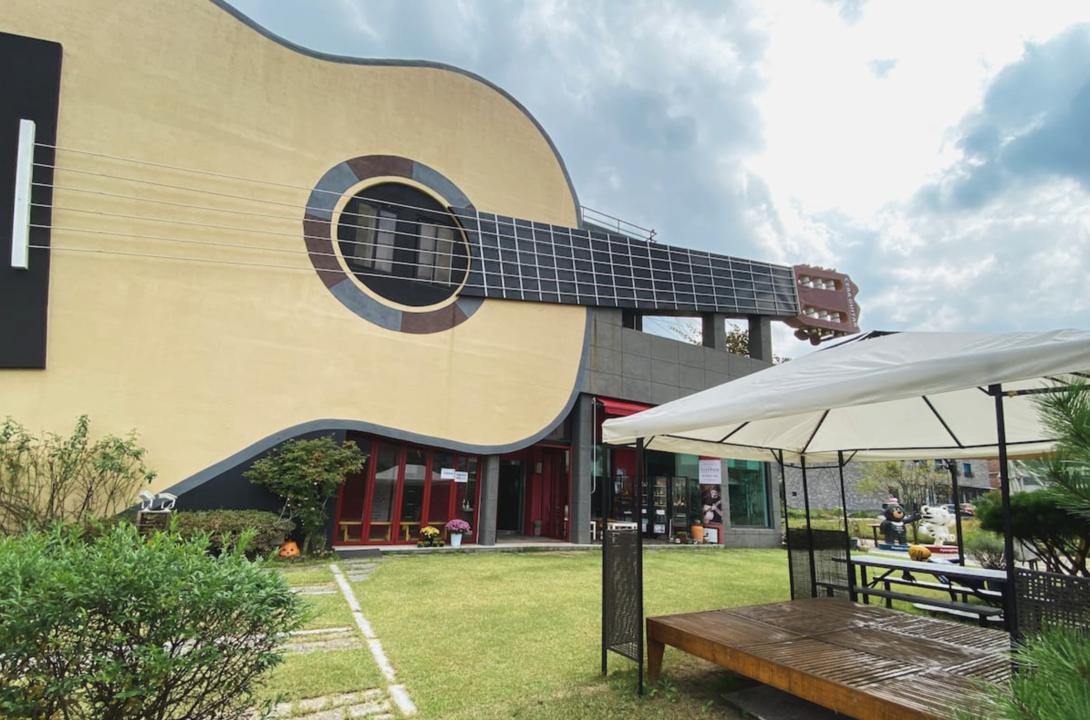The Tikization of Location

Another week, another interesting announcement from Airbnb. Last week, I wrote about the diminishing importance of location as the driver of consumer choice. I described Airbnb's new "categories" — a way to book accommodation based on what kind of experience you're looking for rather than where or when you're planning to go.
One of the categories on Airbnb is called "OMG!" The category caters to customers who are looking for unique experiences in some of "the quirkiest homes on Airbnb." Notable examples include a spaceship-shaped pod in Redberth, a converted construction crane in Amsterdam, and a guitar-shaped cottage in Seoul (pictured above).
In my book, Rethinking Real Estate, I wrote that "the way an asset looks online has a growing impact on its value. This is particularly true for assets that offer instant bookings such as hotels, shared apartments, and short-term meeting rooms... Even when end users are already inside a physical space, they often value it based on how it would look when shared with their friends and followers on social media."
The OMG! category on Airbnb is a case in point. Some of the listings include unique views and amenities that benefit guests directly. But many listings are much more focused on the packaging rather than the contents — they are designed to enable guests to create like-able posts on social media. They might be uncomfortable to get to and stat at, but they're great at generating likes and shares.
It's easy to dismiss OMG! as a curiosity at the fringes of an otherwise pretty standard hospitality market. But Airbnb seems to think they're important. CEO Brian Chesky reports that the OMG! category has been viewed 2.5 million times since launching in May. This morning, CEO Brian Chesky announced a new $10 million fund that would finance new OMG! listings. The OMG! Fund will give up to $100,000 to hosts who have an idea for a new OMG! listing.
A couple of weeks ago, I wrote about my friend Kasey's work on "designing for emergence." Designing for emergence assumes that users (rather than CEOs, designers, and product managers) have the best idea of what they actually need and want. So, instead of designing stuff and hoping it works, designing for emergence means giving your customers and stakeholders the tools to come up with their own products and solutions or own ways to use your existing product.
There are numerous examples of how the world is shifting from central planning to designing for emergence in the media world. More and more of the content we consume has not been produced by large studios or marketed by traditional power gatekeepers. Instead, on platforms such as TikTok, YouTube, and Instagram, users are empowered to create their own content. Even the consumers on these platforms are empowered to share and promote the stuff that they find compelling. Whatever succeeds on these platforms reflects the choices and feedback of thousands or millions of individuals.
Social media platforms are designed to enable new hits to emerge. In a world in which users have an abundance of content at the tip of their fingers, this approach makes more sense than trying to pick winners in advance. And the process works so well, that even traditional gatekeepers — such as record labels and film studios — are picking their next projects based on their past performance on TikTok and YouTube.
And the content that tends to do well on TikTok and YouTube is the content that looks and feels different — think Gangnam Style or Mr Beast. In other words, it's the OMG! content, the kind of stuff that makes you want to tell your friends about.
What's true for videos is true for buildings. In a world where all websites list the same hotels and homes, OMG! listings are a great way to stand out. And by investing in them directly, Airbnb ensures they'll be more of them on its platform and possibly an exclusive relationship with its operators. It's a smart move.
Dror Poleg Newsletter
Join the newsletter to receive the latest updates in your inbox.

